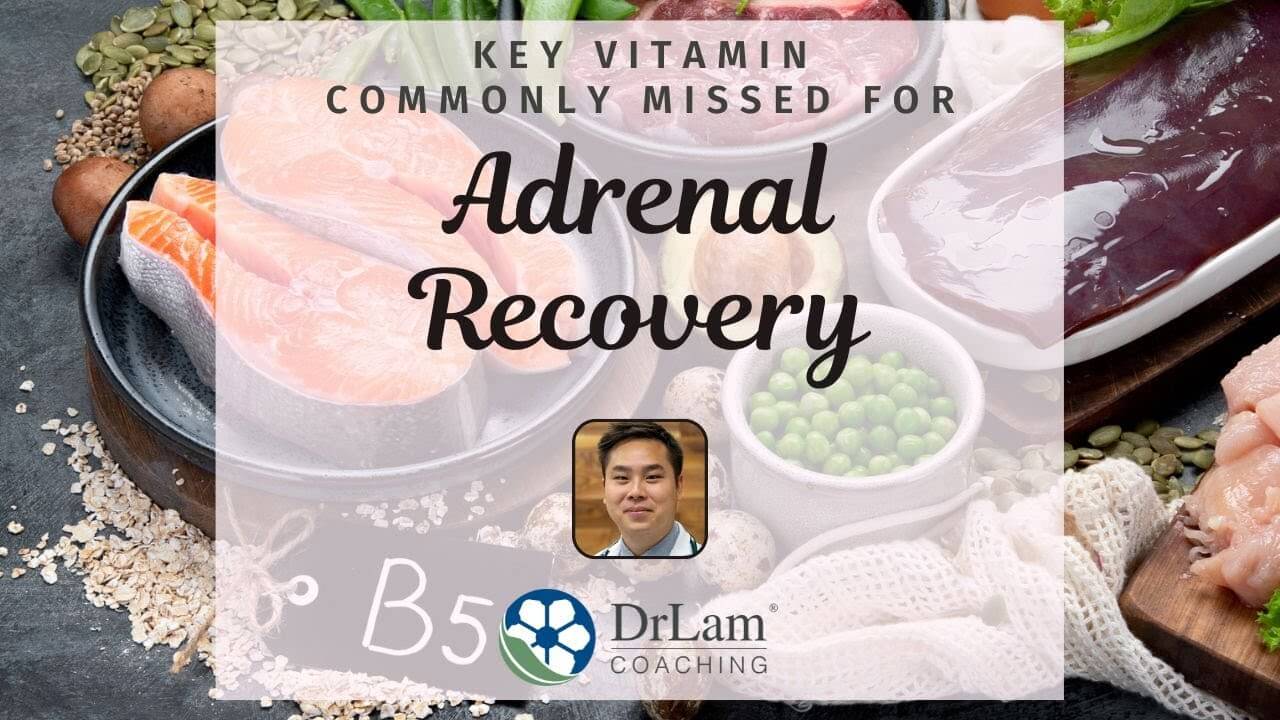
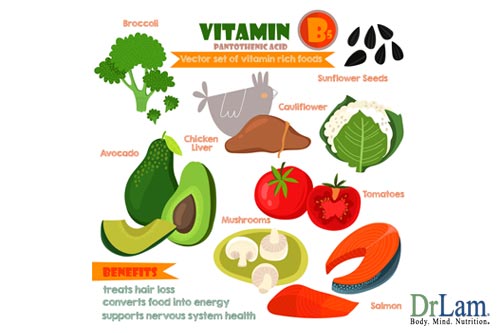 There are so many vitamins constantly in the media. B12 is one we hear about often, but have you ever heard about vitamin b5? In this article, you will not only learn about vitamin b5, but all about vitamin b5 benefits. The term "Pantos" means "everywhere" in Greek. It is from this term that the name for Pantothenic Acid, more commonly known as Vitamin B5, is derived. The thing about Vitamin B5 or Pantothenic Acid, is that it is a form of vitamin manufactured by plants. Mammals do not manufacture this vitamin intrinsically. But, fortunately, we can obtain substantial amounts of this acid in our diet. If our bodies do not have enough of this acid, we can develop a rare form of disease called Pantothenic Acid deficiency. So, what is the true importance about vitamin b5 and how can its deficiency impact your health? Keep reading to learn more about vitamin b5 and find out answers to these questions,
There are so many vitamins constantly in the media. B12 is one we hear about often, but have you ever heard about vitamin b5? In this article, you will not only learn about vitamin b5, but all about vitamin b5 benefits. The term "Pantos" means "everywhere" in Greek. It is from this term that the name for Pantothenic Acid, more commonly known as Vitamin B5, is derived. The thing about Vitamin B5 or Pantothenic Acid, is that it is a form of vitamin manufactured by plants. Mammals do not manufacture this vitamin intrinsically. But, fortunately, we can obtain substantial amounts of this acid in our diet. If our bodies do not have enough of this acid, we can develop a rare form of disease called Pantothenic Acid deficiency. So, what is the true importance about vitamin b5 and how can its deficiency impact your health? Keep reading to learn more about vitamin b5 and find out answers to these questions,
The recommended daily dosage has yet to be established. However, some scientists have given an estimation with regards to the safe and adequate daily dietary intake as follows:
What type of food should we eat to obtain adequate levels of Pantothenic Acid? Doctors say that Brewer's yeast, torula (nutritional) yeast and calf liver are excellent sources of Pantothenic Acid. In addition, we can also eat peanuts, split peas, pecan nuts, oatmeal, mushrooms, soybeans, buckwheat, sunflower seeds, red chilli peppers, avocados, lentils, cashew nuts and other whole grains and nuts.
When Pantothenic Acid enters our bodies, it forms a substance called Pantethine. Pantethine is a more stable disulfide form (or double bonded) of Pantothenic Acid. It is also a more active metabolic substrate that is converted into an enzyme called "Co-Enzyme A" (CoA). CoA plays a critical role in the metabolism and breakdown of the three essential micronutrients: namely proteins, carbohydrates and fats. Learn about vitamin b5 and what it does for the body below.
CoA is also a cofactor in more than 70 enzymatic pathways which including the following:
CoA is also responsible for the initial steps of cholesterol synthesis and all downstream metabolites of cholesterol including steroids, Vitamin D and bile acids.
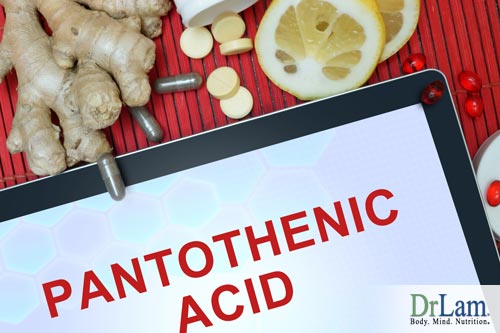 As such, we can see that CoA is a very important enzyme. It also helps to break down the carbon skeleton of most amino acids, which are metabolized to pyruvate and enter the TCA cycle.
As such, we can see that CoA is a very important enzyme. It also helps to break down the carbon skeleton of most amino acids, which are metabolized to pyruvate and enter the TCA cycle.
CoA directs acetyl groups to form all polyisoprenoid compounds, which include ubiquinone (CoQ10), squalene and cholesterol. Our bodies also need CoA for the transportation of long chain fatty acids into the mitochondria where fats are converted into energy.
In a nutshell, CoA is the basis for the production of hemoglobin, bile, sex and adrenal steroids, cholesterol, and a few brain chemicals and neurotransmitters.
We can consume Pantothenic Acid through dietary means. However, it must be noted that the more active form of Pantethine or its reduced-SH form Pantethine that contains the SH molecule necessary for enzyme activity cannot be obtained by consuming whole foods.
When we compare Pantethine with Pantothenic Acid, Pantethine is by far more active when it comes to the production of CoA. This hypothesis has been proven true by many clinical trials. Although taking Pantothenic Acid as a supplement will ultimately lead to the creation of CoA, researchers have pointed out that Pantethine creates twice as much CoA than Pantothenic Acid. This is because the structure of Pantethine is closer to the CoA production pathway.
Pantothenic Acid also has its own benefits. It enhances adrenal function and inflammatory response modulation. Both Pantothenic Acid as well as Pantethine should be considered one synergistic unit and not mutually exclusive nutrients.
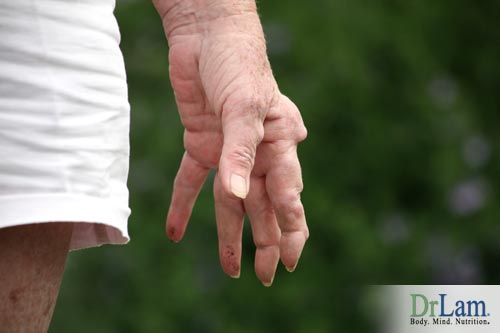
Many people have been using Pantethine as a supplement to treat cardiovascular disease, autoimmune disorders, colitis and Crohn's disease and rheumatoid arthritis. Sometimes, it is also used as an "anti-stress" nutrient.
Pantethine is also well known for its effectiveness in reducing total cholesterol, LDL cholesterol, and triglyceride level, while at the same time raising the good HDL cholesterol.
Pantothenic acid, on the other hand, is ideal for enhancing adrenal functions and reducing reliance on steroids. It also reduces elevated uric acid levels frequently associated with gout and reduces inflammatory response. Sometimes, it can be used as a substitute for non-steroidal anti-inflammatory drugs.
About 40 percent of Americans suffer from abnormal lipid dysfunction. As such, the recent focus has been on the use of Pantethine as a therapeutic agent in the treatment of this illness. Taking Pantethine orally is effective for reducing and normalizing a variety of risk factors in patients with hypercholesterolemia, arteriosclerosis, and diabetes.
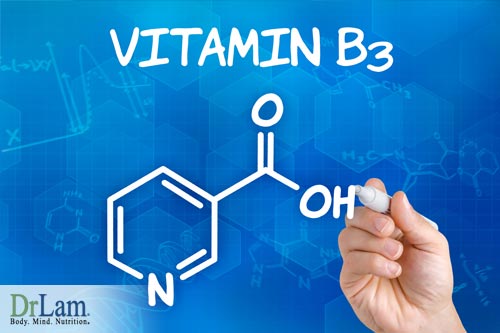 In the past, taking niacin or Vitamin B3 would give the same effect. However, today we know that niacin can lead to inflammations in the liver and possibly raise blood sugar levels in diabetic patients. Furthermore, the high doses of niacin required for therapeutic effect often lead to an intolerable flush. But, so far, Pantothenic Acid and Pantethine do not have any of such negative side effects.
In the past, taking niacin or Vitamin B3 would give the same effect. However, today we know that niacin can lead to inflammations in the liver and possibly raise blood sugar levels in diabetic patients. Furthermore, the high doses of niacin required for therapeutic effect often lead to an intolerable flush. But, so far, Pantothenic Acid and Pantethine do not have any of such negative side effects.
While the exact mechanism of Pantethine is in normalizing parameters associated with dyslipidemia is not clear, clinical studies have proven that when pantethine is added to cultured cells, it causes an 80% inhibition in cholesterol synthesis, most likely inhibiting the activity of HMG-CoA reductase.
Pantethine can also boost the production of enzymes that helps to break down blood fats. It helps to enhance Vitamin E's action and prevents cholesterol from building up in the blood. Pantethine also increases the amount of omega-3 fatty acids, which in turn stabilizes the cellular membrane. Furthermore, it also enhances the production of Coenzyme Q10, leading to stronger cardiac contraction force and increasing the efficiency of energy generation.
Over the years, numerous studies have validated the use of Pantethine in managing an abnormal lipid profile.
In a study, 30 patients with dyslipidemia were examined. They were all given 900 mg of Pantethine daily. Six patients in the subgroup of type IIa dyslipidemia reported a decrease in total cholesterol level by 26%, triglycerides by 28%, "bad" LDL-cholesterol by 38%, very low-density lipoprotein (VLDL) cholesterol by 28%, and Apo-B by 16%. At the same time, their "good" HDL-cholesterol was increased by 34%. Another nine patients with type IIb dyslipidemia experienced a decrease of 25% in total cholesterol, 49% for triglycerides, 33% for LDL-cholesterol, 44% for VLDL-cholesterol, and 11% for Apo-B. At the same time, there was a significant increase in their HDL-cholesterol by 43%. Another 15 individuals with type IV dyslipidemia reported that their total cholesterol decreased by 13%, triglycerides by 68%, VLDL-cholesterol by 53%, and Apo-B by 18%. At the same time, their HDL cholesterol was increased by 25%.
In another case, a double-blind placebo-controlled study was conducted on 29 patients with high cholesterol and triglycerides for a period of 8 weeks. They were given Pantethine at 300 mg 3 times daily. After eight weeks, the subjects reported a 30% reduction in blood triglycerides, a 13.5% reduction in LDL ("bad") cholesterol, and a 10% rise in HDL ("good") cholesterol.
Bertolini et al. treated seven children and 65 adults who suffered from hypercholesterolemia or other diseases associated with hypertriglyceridemia (types IIa and IIb of Fredrickson's classification). Pantethine at 900 mg for children and 1,200 mg for adults were given daily for a period of 3 years. The children reported a 20% reduction in total cholesterol and a 27% decrease in LDL-cholesterol. The adults with type IIa hyperlipoproteinemia reported a 25% decrease in total cholesterol, a 39% decrease in LDL-cholesterol, a 34% decrease in Apo-B, and a slight increase in HDL-cholesterol. In the adult patients with type IIb hyperlipoproteinemia, total cholesterol was reduced by 19.8%, LDL-cholesterol by 37%, triglycerides by 31%, and Apo-B by 6%. In this subgroup, a 23% increase of HDL-cholesterol and a 15% increase in apolipoprotein A-I were also observed.
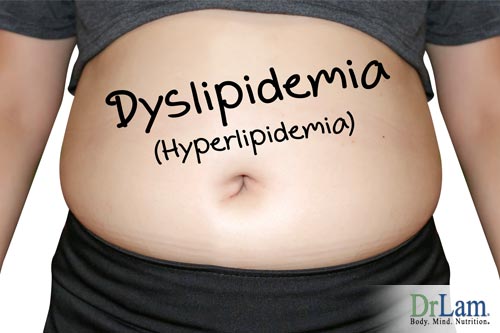 Donati et al. also tested the effectiveness and tolerability of Pantethine in 31 patients with dyslipidemia undergoing chronic hemodialysis. These patients were given 600 to 1,200 mg of Pantethine daily for a period of 9 months. The results revealed a significant improvement in total blood cholesterol for patients with basal hypercholesterolemia and a highly significant reduction of serum triglycerides for the entire group. However, their HDL-cholesterol or total Apo-A did not increase.
Donati et al. also tested the effectiveness and tolerability of Pantethine in 31 patients with dyslipidemia undergoing chronic hemodialysis. These patients were given 600 to 1,200 mg of Pantethine daily for a period of 9 months. The results revealed a significant improvement in total blood cholesterol for patients with basal hypercholesterolemia and a highly significant reduction of serum triglycerides for the entire group. However, their HDL-cholesterol or total Apo-A did not increase.
In another separate study, 600 mg/day of Pantethine was given to 37 hypercholesterolemic and/or hypertriglyceridemic patients for a three-month period. Out of all 37 patients, 21 of them were diabetic. After Pantethine was given to these patients, their total cholesterol, triglycerides, low-density lipoprotein (LDL) cholesterol and apolipoprotein B (Apo-B) was decreased. At the same time, there was an increase in high-density lipoprotein (HDL) cholesterol and apolipoprotein A (Apo-A) in all the groups. When Pantethine was not given to these patients, a reversal in the improvement of these parameters was observed.
Later on, a one year follow-up trial was again conducted in 24 patients with established dyslipidemia of Fredrickson's types IIa, IIb, and IV, alone or associated with diabetes mellitus. Blood lipid assays revealed consistent reductions in total cholesterol, LDL-cholesterol, and Apo-B, along with an increase of HDL-cholesterol and Apo-A in individuals with types IIa and IIb dyslipidemia. The results were equally favorable in patients with uncomplicated dyslipidemia and in those with associated diabetes mellitus. A marked reduction in triglycerides was also observed in the patients with Fredrickson's type IV dyslipidemia.
In another experiment conducted by Binaghi et al., he used 24 hypercholesterolemic perimenopausal women as his subjects. The women were supplemented with 900 mg/day of Pantethine. After 16 weeks, they reported an efficacy rate of about 80% with significant reductions in total cholesterol, LDL-cholesterol, and LDL/HDL ratios.
Many other studies have proven the effectiveness of using Pantethine to improve cholesterol and triglyceride levels in people with diabetes. The results were all encouraging. In one study, oral administration of Pantethine given to 31 diabetic patients with hyperlipidemia led to a decrease in their cholesterol level from a mean value of 236 mg/dl to 217 mg/dl (10% reduction). Their HDL-cholesterol level was also increased from a mean value of 40 mg/dl to 43 mg/dl (5% increase).
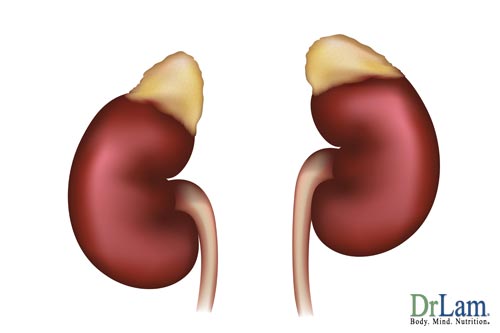 So, how about vitamin b5 and its impact of my adrenal glands? Well, our adrenal glands need Pantothenic Acid to manufacture anti-inflammatory hormones such as cortisol. Pantothenic Acid is therefore a potent natural treatment for inflammatory related ailments such as arthritis, colitis, and allergies. As such, we can deduce that inflammatory and infectious processes lead to cardiovascular disease. The use of Pantothenic Acid has indeed been broadening.
So, how about vitamin b5 and its impact of my adrenal glands? Well, our adrenal glands need Pantothenic Acid to manufacture anti-inflammatory hormones such as cortisol. Pantothenic Acid is therefore a potent natural treatment for inflammatory related ailments such as arthritis, colitis, and allergies. As such, we can deduce that inflammatory and infectious processes lead to cardiovascular disease. The use of Pantothenic Acid has indeed been broadening.
Pantethine seems to exert an influence over some indicators of adrenal function. Several animal experiments have shown that a lack of Pantothenic Acid will affect adrenal cortex function, most likely due to the reduction of adrenal corticosteroids. When Pantethine or CoA is injected into animals, there is a marked increase in steroidogenous effect.
During a study about vitamin b5, it was reported that Pantethine was given to 20 humans with a variety of clinical diseases to buffer the increase in 24-hour urination 17-hydroxycorticosteroids and plasma 11-hydroxycorticosteroids stimulated by a loading dose of adrenocorticotropic hormone.
We all know that Pantothenic Acid is an important nutrient to maintain an optimum adrenal function. When the adrenal glands fail to function, our bodies will not be able to produce progesterone. This will result in estrogen dominance that can lead to cancer of the ovarian, breast and cervical systems.
People who are taking steroids such as prednisone for treating health conditions such as asthma and autoimmune disease should reduce their medication dosage. With the help of Pantothenic Acid, they can be slowly be weaned of their dependency on anti-inflammatory drugs.
 Is there anything that should worry me or concern me about vitamin b5 and its use in my life? An alert to those using Pantethine and Pantothenic Acid for adrenal fatigue recovery: While both are good nutrients, the timing and dosage of their use, either in combination or in sequence, can have very different and sometimes paradoxical outcomes. This is especially true and more prevalent the more advanced the adrenal fatigue is. Both nutrients can synergistically affect each other. They often potentiate the properties of other natural compounds as well. At times, they may trigger paradoxical reactions when concurrently used with other natural compounds. Such compounds include other vitamins, herbs, and glandulars. One can feel more anxious, "wired", or even experience crashes when both are taken in such cases. Always consult a qualified and experienced adrenal fatigue recovery health care professional.
Is there anything that should worry me or concern me about vitamin b5 and its use in my life? An alert to those using Pantethine and Pantothenic Acid for adrenal fatigue recovery: While both are good nutrients, the timing and dosage of their use, either in combination or in sequence, can have very different and sometimes paradoxical outcomes. This is especially true and more prevalent the more advanced the adrenal fatigue is. Both nutrients can synergistically affect each other. They often potentiate the properties of other natural compounds as well. At times, they may trigger paradoxical reactions when concurrently used with other natural compounds. Such compounds include other vitamins, herbs, and glandulars. One can feel more anxious, "wired", or even experience crashes when both are taken in such cases. Always consult a qualified and experienced adrenal fatigue recovery health care professional.
In addition, more caution should be exercised for young children, pregnant or nursing women or people with serious liver or kidney disease as the safe level dosage has yet to be established.
In general, alkalized water helps support the immune system. As for children, small amounts should be ok, but best to consult your pediatrician.
